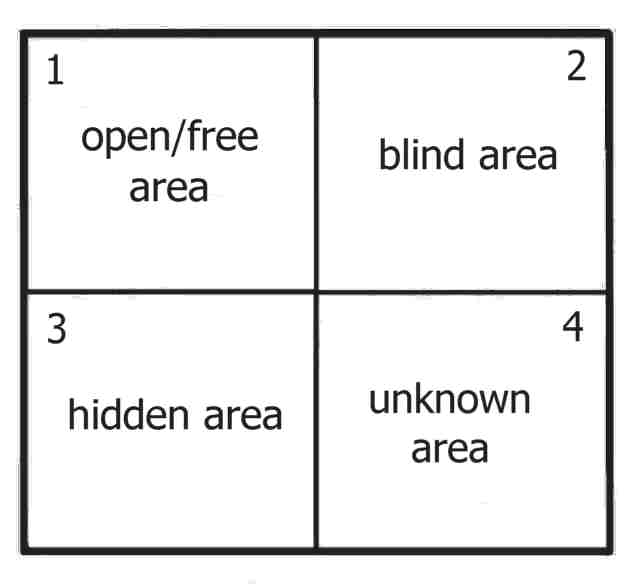The Johari Window model is a simple and useful tool for
illustrating and improving self-awareness, and mutual understanding
between individuals within a group. The Johari Window model can also
be used to assess and improve a group's relationship with other
groups. The Johari Window model was devised by American psychologists
Joseph Luft and Harry Ingham in 1955, while researching group
dynamics at the University of California Los Angeles. The model was
first published in the Proceedings of the Western Training Laboratory
in Group Development by UCLA Extension Office in 1955, and was later
expanded by Joseph Luft. Today the Johari Window model is especially
relevant due to modern emphasis on, and influence of, 'soft' skills,
behaviour, empathy, cooperation, inter-group development and
interpersonal development.
Like some other behavioural models (eg, Tuckman, Hersey/Blanchard), the Johari Window is based on a four-square grid - the Johari Window is like a window with four 'panes'. Here's how the Johari Window is normally shown, with its four regions.
johari window four regions
- what is known by the person about him/herself and is also known by others - open area, open self, free area, free self, or 'the arena'
- what is unknown by the person about him/herself but which others know - blind area, blind self, or 'blindspot'
- what the person knows about him/herself that others do not know - hidden area, hidden self, avoided area, avoided self or 'facade'
- what is unknown by the person about him/herself and is also
unknown by others - unknown area or unknown self
Like some other behavioural models (eg, Tuckman, Hersey/Blanchard), the Johari Window is based on a four-square grid - the Johari Window is like a window with four 'panes'. Here's how the Johari Window is normally shown, with its four regions.
 |
This is the standard representation of the Johari Window model,
showing each quadrant the same size. The Johari Window 'panes' can be changed in size to reflect the relevant proportions of each type of 'knowledge' of/about a particular person in a given group or team situation. In new groups or teams the open free space for any team member is small (see the Johari Window new team member example below) because shared awareness is relatively small. As the team member becomes better established and known, so the size of the team member's open free area quadrant increases. |